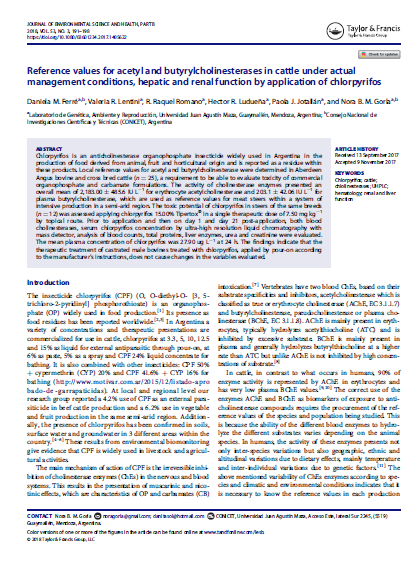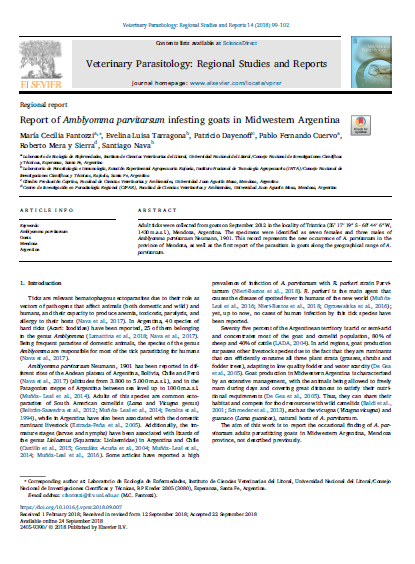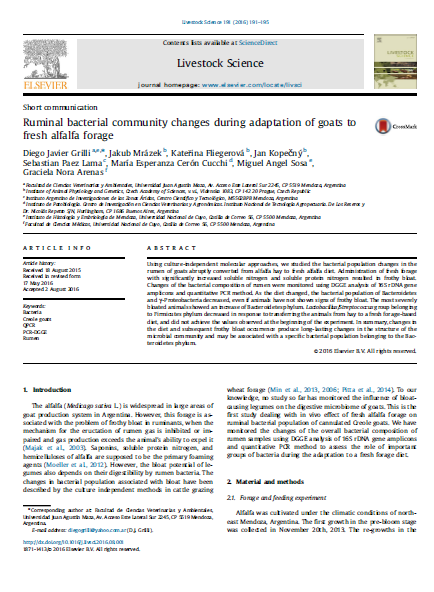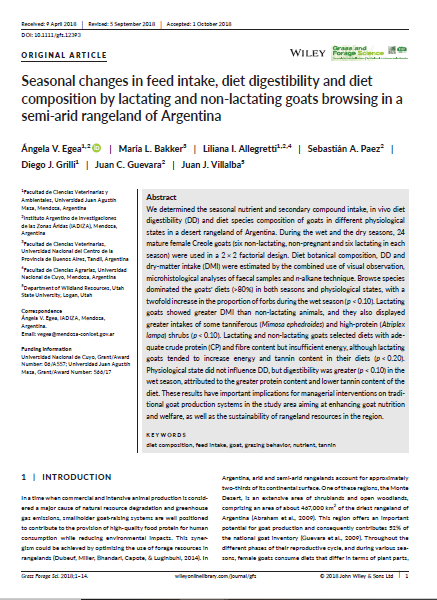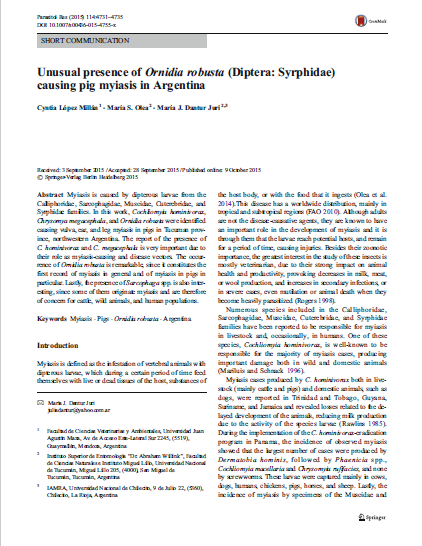Browsing Ciencias veterinarias by Title
Now showing items 21-25 of 25
-
Reference values for acetyl and butyrylcholinesterases in cattle under actual management conditions, hepatic and renal function by application of chlorpyrifos
(Comité editorial Journal of Environmental Science and Health, 2018-01-02)Chlorpyrifos is an anticholinesterase organophosphate insecticide widely used in Argentina in the production of food derived from animal, fruit and horticultural origin and is reported as a residue within these products. Local reference values for acetyl and butyrylcholinesterase were determined in Aberdeen Angus bovine and cross bred cattle (n D 25), a requirement to be able to evaluate toxicity of commercial organophosphate and carbamate formulations. The activity of cholinesterase enzymes presented an overall mean of 2,183.00 § 485.6 IU L¡1 for erythrocyte acetylcholinesterase and 203.1 § ... -
Report of Amblyomma parvitarsum infesting goats in Midwestern Argentina
(Comité editorial Veterinary Parasitology, 2018-09-24)Adult ticks were collected from goats on September 2012 in the locality of Trintrica (35° 17′ 19″ S - 68° 44′ 6″ W, 1430 m.a.s.l.), Mendoza, Argentina. The specimens were identified as seven females and three males of Amblyomma parvitarsum Neumann, 1901. This record represents the new occurrence of A. parvitarsum in the province of Mendoza, as well as the first report of the parasitism in goats along the geographical range of A. parvitarsum. -
Ruminal bacterial community changes during adaptation of goats to fresh alfalfa forage.
(Editorial Livestock Science, 2016-08-02)Using culture-independent molecular approaches, we studied the bacterial population changes in the rumen of goats abruptly converted from alfalfa hay to fresh alfalfa diet. Administration of fresh forage with significantly increased soluble nitrogen and soluble protein nitrogen resulted in frothy bloat. Changes of the bacterial composition of rumen were monitored using DGGE analysis of 16S rDNA gene amplicons and quantitative PCR method. As the diet changed, the bacterial population of Bacteroidetes and γ-Proteobacteria decreased, even if animals have not shown signs of frothy bloat. The most ... -
Seasonal changes in feed intake, diet digestibility and diet composition by lactating and non-lactating goats browsing in a semi-arid rangeland of Argentina
(Comité editor Grass and Forage Science, 2018-10-01)We determined the seasonal nutrient and secondary compound intake, in vivo diet digestibility (DD) and diet species composition of goats in different physiological states in a desert rangeland of Argentina. During the wet and the dry seasons, 24 mature female Creole goats (six non-lactating, non-pregnant and six lactating in each season) were used in a 2 × 2 factorial design. Diet botanical composition, DD and dry-matter intake (DMI) were estimated by the combined use of visual observation, microhistological analyses of faecal samples and n-alkane technique. Browse species dominated the goats’ ... -
Unusual presence of Ornidia robusta (Diptera: Syrphidae) causing pig myiasis in Argentina.
(Comité editorial Parasitology Research, 2015-10-09)Myiasis is caused by dipterous larvae from the Calliphoridae, Sarcophagidae, Muscidae, Cuterebridae, and Syrphidae families. In this work, Cochliomyia hominivorax, Chrysomya megacephala, and Ornidia robusta were identified causing vulva, ear, and leg myiasis in pigs in Tucuman province, northwestern Argentina. The report of the presence of C. hominivorax and C. megacephala is very important due to their role as myiasis-causing and disease vectors. The occurrence of Ornidia robusta is remarkable, since it constitutes the first record of myiasis in general and of myiasis in pigs in particular. ...







